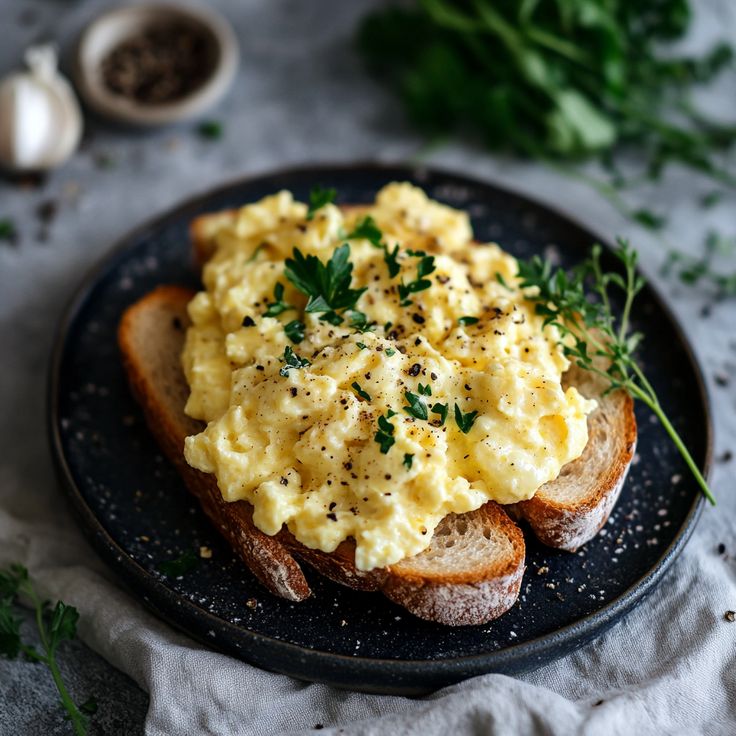Introduction
Scrambled eggs are among the simplest and most comforting dishes in the world. With just a few eggs and a little heat, you can create a creamy, rich, and versatile meal that works at any time of day. But behind this apparent simplicity lies a world of nuance. The texture, flavor, and style of scrambled eggs can vary enormously depending on ingredients, cooking methods, and cultural preferences.

In this in-depth guide, we’ll take a closer look at scrambled eggs in all their forms—covering everything from techniques and tools, to international styles, nutritional information, pairing suggestions, and recipe enhancements.
Chapter 1: The Origins of Scrambled Eggs
Eggs have been a staple of human diets for thousands of years. Historical references to scrambled eggs date back to Ancient Rome, where texts describe beaten eggs cooked with herbs and spices. In 14th-century Europe, scrambled egg recipes appeared in French cookbooks with ingredients like cream, butter, and cheese. Throughout the centuries, eggs became a symbol of both peasant cooking and royal feasts.
Today, scrambled eggs are eaten around the world—from the buttery French style to spicy Indian variations. Their global reach and adaptability make them one of the most beloved egg dishes.
Chapter 2: Understanding the Science of Scrambling
To truly master scrambled eggs, it helps to understand what’s happening on a molecular level.
- Egg Composition: Eggs are made of water, proteins, fats, and minerals. When heat is applied, proteins unfold and bind together, transforming from liquid to solid.
- Coagulation: The key is to gently coagulate the eggs—cooking them low and slow to prevent rubberiness.
- Fat Matters: Adding fat like butter, cream, or cheese coats protein molecules and slows coagulation, resulting in creamier eggs.
Tools You’ll Need:
- Nonstick skillet or sauté pan
- Silicone spatula or wooden spoon
- Mixing bowl
- Whisk or fork
Chapter 3: The Basic Scrambled Eggs Recipe
Ingredients:
- 4 large eggs
- 1 tbsp butter
- 2 tbsp milk or cream
- Salt and pepper, to taste
Instructions:
- Crack the eggs into a bowl and add milk/cream.
- Whisk until fully mixed and slightly frothy.
- Heat butter in a nonstick pan over medium-low heat.
- Pour in eggs. Let them sit for a few seconds.
- Gently stir with a spatula, pushing from edges to center.
- Cook slowly, stirring occasionally, until just set.
- Remove from heat before fully done—carryover cooking will finish them.
Chapter 4: Global Variations of Scrambled Eggs
1. French-Style (Œufs Brouillés)
- Ultra-silky, slow-cooked in a double boiler or very low heat with butter.
- Stirred constantly, often finished with crème fraîche and herbs.
2. English-Style
- Cooked a bit firmer than French, but still creamy.
- Often served on toast or with smoked salmon.
3. American-Style
- Fluffy and firmer.
- Milk or cream is common. Served with bacon, pancakes, or hash browns.
4. Mexican Huevos a la Mexicana
- Eggs scrambled with tomatoes, onion, and green chili.
- Served with tortillas, refried beans, and salsa.
5. Indian Masala Eggs
- Spiced with turmeric, cumin, green chilies, and onion.
- Served with flatbread or in rolls.
6. Chinese Tomato and Egg
- Stir-fried tomatoes mixed with scrambled eggs.
- Sweet-savory profile. Common in Chinese home cooking.
Chapter 5: Additions & Enhancements
Scrambled eggs are a blank canvas. Here are ways to customize:
Cheeses:
- Cheddar
- Feta
- Goat cheese
- Parmesan
Herbs:
- Chives
- Parsley
- Dill
- Basil
Vegetables:
- Spinach
- Mushrooms
- Zucchini
- Bell peppers
Proteins:
- Bacon
- Sausage
- Smoked salmon
- Ham
International Twists:
- Japanese Tamago (sweet scrambled)
- Middle Eastern Eggs with Za’atar
- Korean Gyeran-bokkeum (soy sauce & sesame oil)
Chapter 6: Nutritional Profile
Eggs are packed with high-quality protein and essential nutrients:
| Nutrient | 1 Large Egg |
|---|---|
| Calories | 70 |
| Protein | 6g |
| Fat | 5g |
| Cholesterol | 186mg |
| Vitamin D | 10% DV |
| B Vitamins | Rich source |
Adding butter or cream increases fat/calories, but also improves taste and satiety.
Chapter 7: Serving Suggestions & Pairings
Classic Pairings:
- Toast with avocado
- Crispy hash browns
- Pancakes or waffles
- Grilled tomatoes
Healthy Pairings:
- Sliced cucumbers
- Whole grain toast
- Fresh fruit bowl
- Green smoothie
Gourmet Ideas:
- Truffle oil drizzle
- Caviar garnish
- Microgreens and edible flowers
- Whipped goat cheese base
Chapter 8: Common Mistakes to Avoid
- High Heat – Scrambled eggs should never sizzle.
- Under-whisking – Results in uneven texture.
- Overcooking – Makes them dry and rubbery.
- Adding salt too early – Can toughen proteins. Add mid or post-cook.
Chapter 9: Scrambled Egg Meal Ideas
1. Breakfast Wraps
- Scrambled eggs, cheese, salsa, and avocado in a tortilla.
2. Egg Toasties
- Scrambled eggs on buttered toast with herbs and tomato slices.
3. Protein Bowls
- Quinoa, spinach, scrambled eggs, and grilled chicken.
4. Egg Fried Rice
- Scrambled eggs folded into leftover rice with soy sauce and veggies.
5. Egg & Veggie Muffins
- Pre-cooked scrambled egg mixture baked in muffin tins.
Chapter 10: Batch Cooking & Storage
- Fridge: Store in airtight container for up to 3 days.
- Freezer: Not ideal. Eggs tend to get rubbery.
- Reheat: Microwave gently or stir-fry briefly on low heat.
Conclusion
Scrambled eggs are more than a simple breakfast—they’re a foundation of versatile, delicious meals across the world. With just a few tweaks, you can turn them into luxurious gourmet dishes or nutrient-packed meal preps. Whether you prefer soft and silky or firm and fluffy, there’s a scrambled egg style for every palate.
